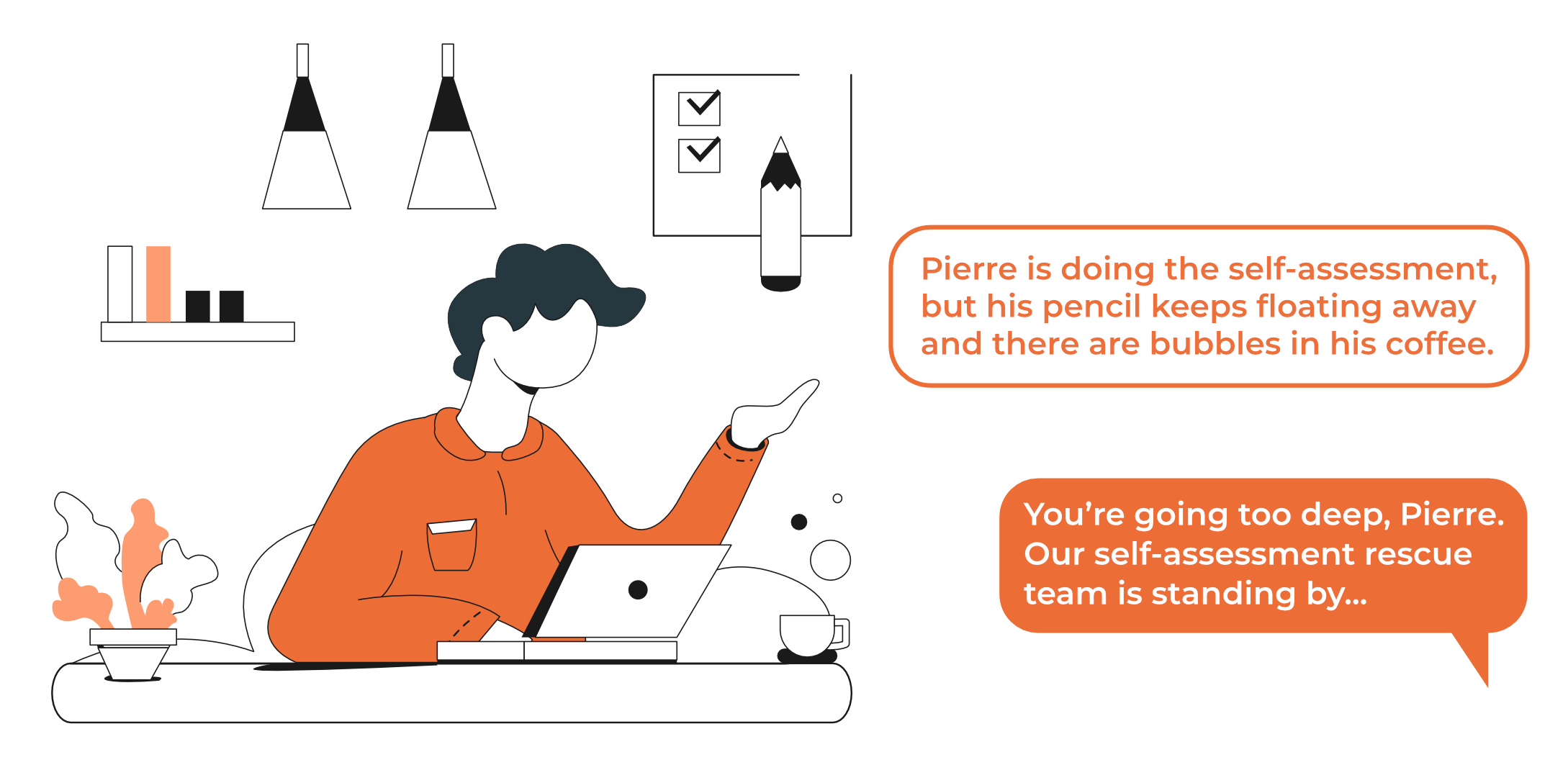
A know-how guide to SME self-assessment in Horizon Europe
You’ve just been informed by the European Commission that you have been selected as a beneficiary of one of their coveted grants for Small or Medium-sized Enterprises (SMEs). You then find yourself under a mountain of paperwork to do, documents to send, questionnaires to fill out and the list goes on…
One thing on your to-do list (if you received either grant first or grant only funding) will be the SME self-assessment.
Self-assessment – what is it?
The SME self-assessment is an online questionnaire in the Funding & Tenders portal that allows you to determine if your company qualifies as a SME according to the European Commission’s recommendation 2003/361/EC. The questions are adapted based on your answers.
The questionnaire focuses on 3 main points:
- Your staff headcount
- Your turnover / balance sheet total
- Your ownership structure
To qualify as an SME, your company should have less than 250 employees, a turnover that is not above 50M € and/or an annual balance sheet total of no more than 43M €. Additionally, any shareholder holding more than 25% of shares in your company can also have an impact on this assessment. For more information on this, feel free to read the following guide.
Self-assessment – how to do it?
The first step of the questionnaire will be based on your company. One of the rules is that you should be involved in economic activity and therefore generate income and turnover. It will then ask you to provide information from your last closed financial statement including the staff headcount, annual turnover and annual balance sheet total. If no turnover has been generated, it will ask you to provide the same information up until the year you believe you will start generating a turnover.
The second step involves your shareholders and the ownership structure of your company. It’s advisable to prepare a diagram of who owns your company since you will have to declare private entities who detain more than 25% of your company as well as individuals or natural persons who hold more than 50% of voting rights. For each company holding more than 25% of shares, you will also need to provide their financial information and staff headcount to make sure that they themselves are also an SME.
The next steps will require information about the shares your company holds in other entities as well as any special relations your company may hold in other entities (influence, voting rights …).
The main difference between an SME self-assessment and a full check is that under a self-assessment, you are the one inputting the information. On the other hand, with a full SME check, you will have to send a list of documents to the Validation Services of the European Commission who will be charged with determining if your company is within the thresholds previously outlined. You can find more information on the full SME check in our blog article here.
To make sure you have everything you need to fill out the questionnaire, here is a short checklist you can use:
- Last closed financial statements for your company and all other relevant entities
- Staff headcount for your company and all other relevant entities
- Capitalisation table for your company
- If no turnover is registered for the last period due to a lengthy time for market entry, a provisional P&L account for the years up to your generation of turnover.
If you need help in filling out the questionnaire or you are wondering if your company qualifies as an SME, don’t hesitate to contact us at hello@getpolite.eu and we would be happy to help!